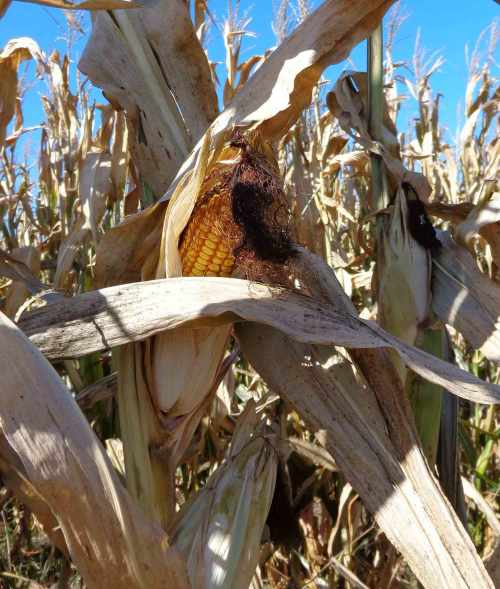I visited the barn and all the work sheds and out buildings, but I spent the most time in the old farmhouse. Here, a delightfully entertaining docent (Wayne, a former forest ranger) regaled me with stories of life on an 1890 farm.
By 1890, kitchens were fairly modern, at least compared to 50 years earlier. Stoves (vs. open fire places) were available, and iceboxes offered at least some ability to keep things cool and preserved. A pump at the sink brought in rainwater from a cistern, so no hauling water from a well.
In the first photo, you can see not only the “new” wood-burning stove, but also, on the wall nearby, the bathtub. Kitchens would be the only rooms with running water and, during the winter, the only ones that were warm. In the second photo, some kitchen essentials, including a butter tub and coffee grinder (in a style still available) sit atop the icebox.


A nice kitchen was important, because the kind of work done on a farm called for lots of meal preparation. People consumed upwards of 6,000 calories a day (though a large man might consume 10,000 or more), so five meals a day were the norm. A big breakfast was served at 6:00 or 6:30. Around 9:30 or 10:00, there would be a break for a light meal (cornbread was a popular choice). Dinner was served at noon. This was the main meal of the day. Another break, or “lunch,” came at around 3:00 pm, and the final meal would be supper, around 6:00 pm or after the sunset. (I did a little post-visit research on the word “lunch,” and learned that it is shortened from “luncheon,” which in the 1600s came to mean “light repast between meals,” and earlier meant “a large piece of food” or “thick piece, hunk”—I’m guessing of bread, since that was a common element of a meal for those handling ploughs, and even today, a “ploughman’s lunch” in England will get you a hunk of cheese and thick piece of bread, along with a bit of salad and pickle, in almost any pub in the country.)
Popcorn might be served with cream and sugar for breakfast. Wayne assured me that this was an awesome way to consume popcorn. He also related that popped corn was sometimes crushed with a rolling pin, with the white flakes being picked out and mixed with homemade marshmallow, in what would have been roughly the equivalent of Rice Krispie Treats.
The big meals were taken in the dining room. In the winter, families that had servants might have the servants stand in the dining room, to add a bit more body heat.












